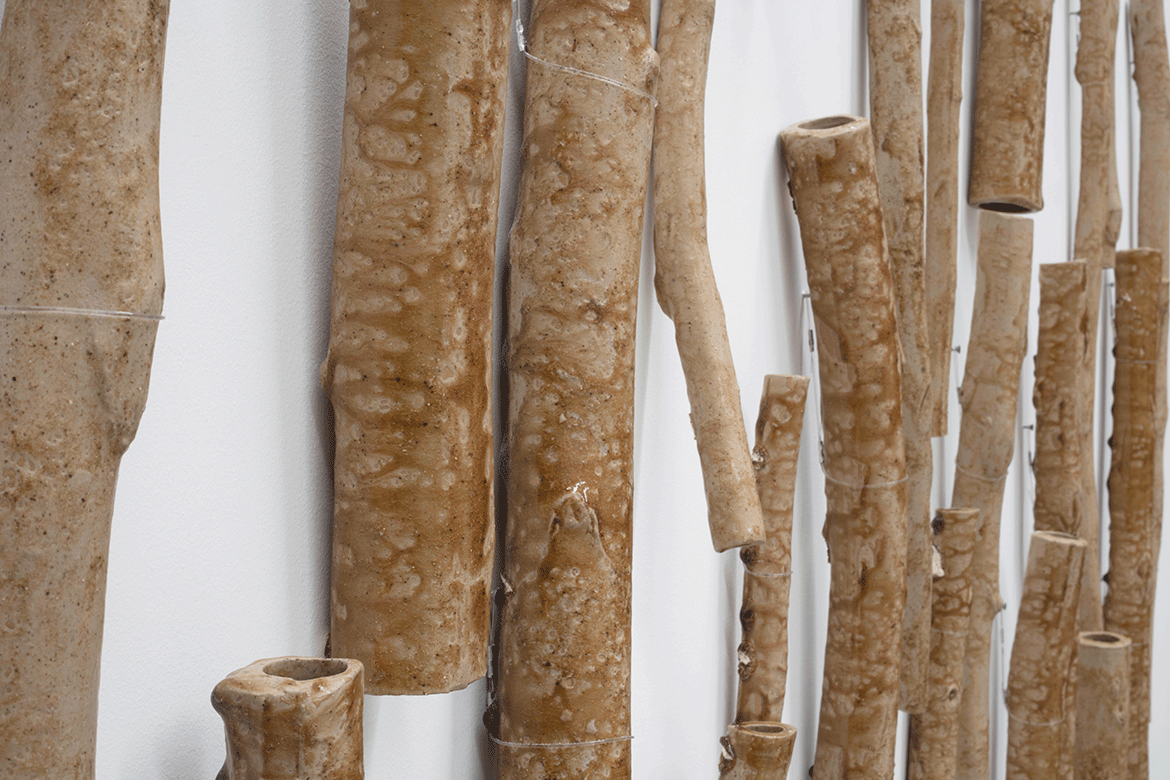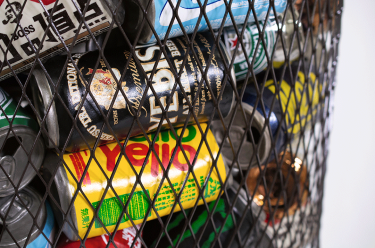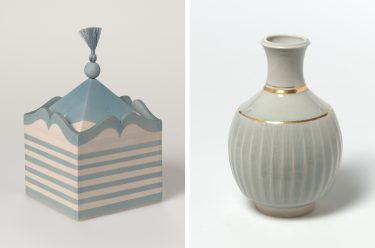Australian artist Yasmin Smith is known for her research-based ceramic installations that formally and chromatically evoke the landscape from which they are produced. As part of her investigative method, Smith gathers natural materials and, through analysis, determines how she can harness their chemical properties. Key to the artist’s process is burning plant material as a basis for glazes. The minerals, nutrients and toxins absorbed from soil and water remain in the ash, resulting in fascinating colour and textural variations in the glazes that cover Smith’s earthenware and ceramic casts of the original plants.
Watch | Yasmin Smith introduces ‘Flooded Rose Red Basin’
‘Flooded Rose Red Basin’
Flooded Rose Red Basin 2018 draws upon ancient ceramic traditions in China while also referencing the rapid development that is changing that country’s rural landscape. The ceramic sculpture was made while Smith was in residence at the Jinhui Ceramic Sanitary Ware Factory near Wuchangzhen, in Sichuan Province. Ci zhu bamboo was collected from the nearby Shiyan village, in Jiajiang County, known for its tradition of bamboo paper-making. Segments of the stems were cast at the factory in collaboration with the workers who usually produce toilets and sinks. The plant material was burnt, and the remaining ash used to glaze the stoneware objects.
Jiajiang bamboo
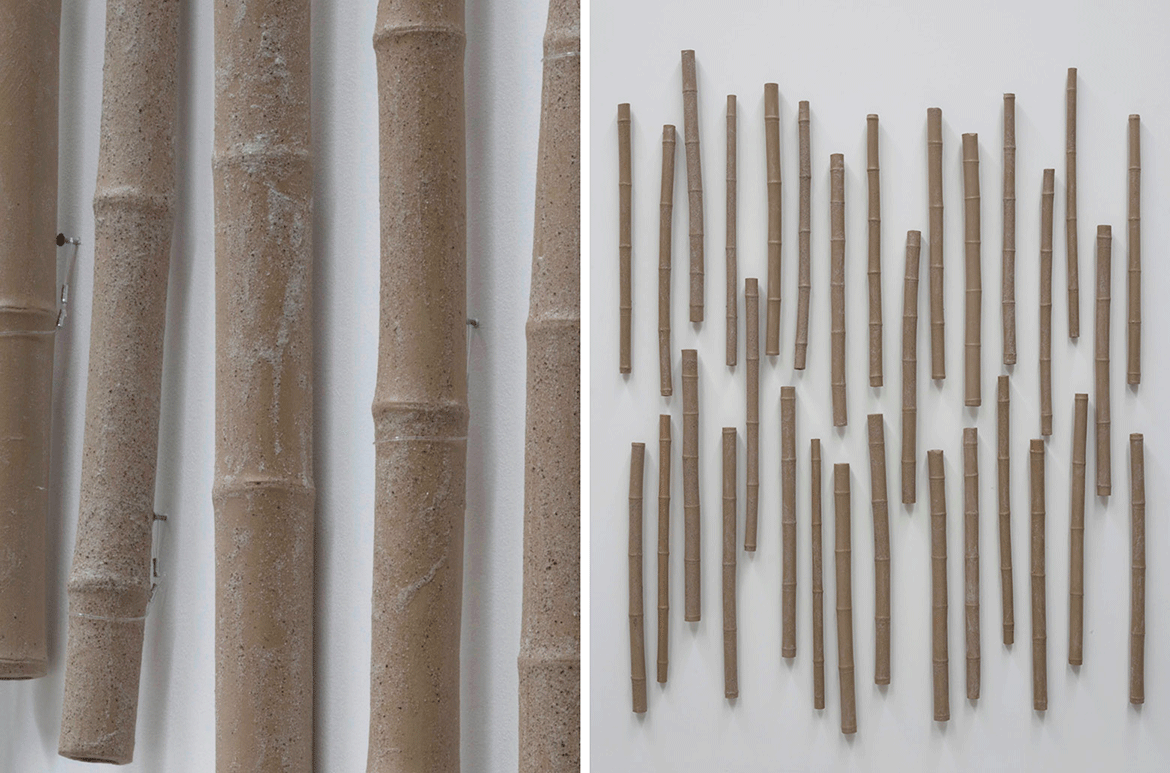
Eucalyptus grandis
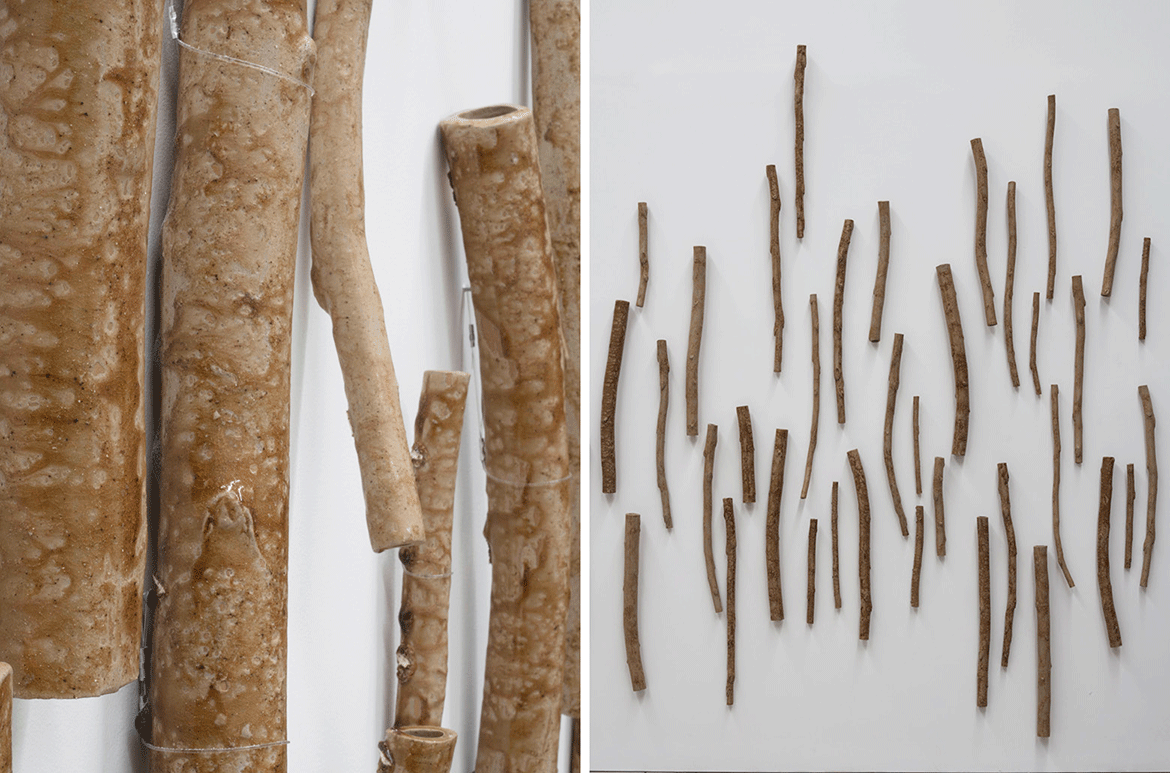
Smith’s initial interest in bamboo was spurred on by recent scientific investigations into the material as a possible source of biosilica for future electric, solar, satellite and phone technologies. During her time in Sichuan, however, the artist noticed established plantings of Eucalyptus grandis — a species endemic to Australia, commonly known as flooded gum or rose gum. Eucalyptus was first introduced in China in 1890 as an ornamental planting, but it was not until the 1950s that large eucalyptus timber plantations were established.
Encountering this Australian tree far from its original habitat, yet deeply embedded in the Chinese landscape, prompted Smith to create a set of stoneware eucalypt branches with a syrupy, gum-ash glaze that are presented alongside the sections of cast bamboo.
The glazes are unrefined and freely stream and pool across the body of the branches and stems. Although it might be assumed that the high amount of silica in the glaze would produce a glassy finish, the bamboo glaze is matt with speckles of sand-like deposits. Meanwhile, the high amount of iron and manganese give the eucalyptus glaze its amber-olive colour. Hairline cracks appear on the surface as a result of the object expanding and compressing at a different rate to the glaze during firing. While the bamboo stems and gum branches are repeated forms made from industrial stoneware, their idiosyncratic glazes make them unique objects.
In Flooded Rose Red Basin, Smith utilises available organic matter to elegantly reveal the ecological, cultural and economic history of the emblematic bamboo and gum, and in turn the distinct connections between Australia and China.
Ellie Buttrose is Curator, Contemporary Australian Art, QAGOMA
This is an edited extract from the QAGOMA publication The 10th Asia Pacific Triennial of Contemporary Art available in-store and online from the QAGOMA Store.
This essay draws on conversations with the artist in January and April 2020 and May 2021
Watch | Installation time-lapse
‘The 10th Asia Pacific Triennial of Contemporary Art’ (APT10) / Queensland Art Gallery and Gallery of Modern Art (QAGOMA) Brisbane / 4 December 2021 to 26 April 2022
#QAGOMA
